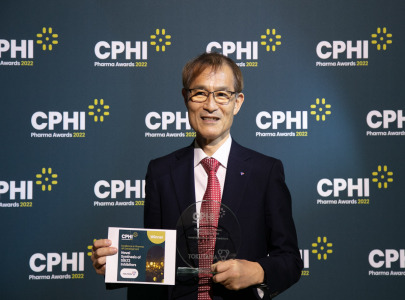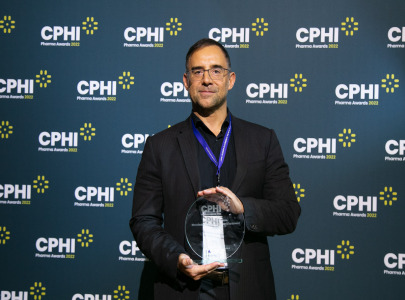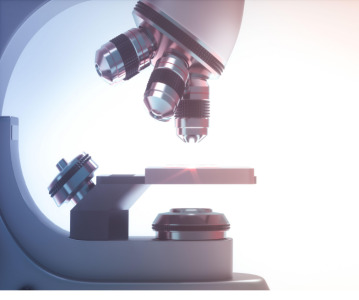CPHI Frankfurt 2022: Innovator Interview – DSM Biomedical
.png)
At CPHI Frankfurt we spoke to Anne-Cecile Bayne, Global Science & Innovation Lead Pharma and Medical Nutrition, and Marc Hendriks, Vice President Strategy & Business Development, on their expertise in nitrosamines and business strategy at DSM Biomedical.
The two leaders from DSM discussed the exciting new projects they are working on in improving patient health through nutrition and with more advanced technologies to increase patient compliance.
Could each of you introduce yourselves and give some background into your roles at DSM?
I’m Anne-Cécile Bayne, I’m a science and innovation lead for the pharma and nutrition segment, in other words, I lead projects using our portfolio of vitamins and lipid intermediates in the realm of pharma and medical nutrition. My background is in the sciences - biotech and pharma.
Marc Hendriks, responsible for strategy and business development at DSM Biomedical. I have been with the company for 16 years. My background is in biomaterials and technology. I have been in various business roles for the past 10 years or so, and I am currently in strategy and business development within which, my team has responsibility for drug delivery platforms and building this area for DSM Biomedical.
What are the principal ideas you are focusing on at the minute?
Anne-Cécile: On our side of innovation, one critical priority we are focusing on is nitrosamine risk mitigation; this takes advantage of the properties of two of our vitamins, alpha-tocopherol (vitamin E) and ascorbic acid (vitamin C). They have long been known to be able to block nitrosamine formation in reactions, since the 1960s or70s. Recently, it became more apparent as a challenge for drug products and the pharma industry. We are using the expertise that we have in those ingredients to help our pharmaceutical customers deal with this issue coming up.
Can you give a brief overview on why nitrosamines in drug products are a concern for human health?
Anne-Cécile: They have been a cause for concern because a number of nitrosamine compounds have been associated with carcinogenic risk. The list of nitrosamine compounds being linked to carcinogenic effects is growing. The food industry is aware of this issue and has been dealing with it for some time. It lacked visibility in the pharmaceuticals industry but recently the regulators started to pay closer attention to these contaminants, so they made a new list of recommendations and regulations that is intended to keep the level of nitrosamine to a minimum in drug products.
Have the regulators set cut-off values?
Anne-Cécile: Cut-off values have been set by the FDA and the European agencies as well.
How are you working to mitigate the risk of nitrosamines in drug development at the minute?
Anne-Cécile: Now, the pharma companies need to demonstrate the safety of their products and show that nitrosamine levels in their products are below the set limits. We provide risk assessment for the products we sell and we can support our customers with their mitigation plans using ascorbic acid and/or alpha-tocopherol.
Have you experienced any challenges in this area?
Anne-Cécile: The challenge for us is to increase the knowledge out there with these ingredients in support of the pharmaceutical industry. So we develop research programmes and sets of information that are useful to the pharma industry as to how much alpha-tocopherol or ascorbic acid to add to the formulation of a specific drug of interest, what products will be formed, what to be careful about. It is challenging at the minute. It’s not a ’one size fits all’ approach, each customer has its own processes, which need to be thoroughly assessed and to see if our solutions are going to be a fit. The whole process requires experimentation and testing, working together with our customers.
One of DSM core values is contributing to a more sustainable world, how are you working to achieve this?
Marc: at DSM Biomedical we have developed the next generation of biodegradable polymers, which we can use to develop sustained release formulations, so we can enable the slow release of an API or biologic over a prolonged period of time. This aims to address therapy compliance that feeds back into sustainable development - if you replace daily injections with injections every month or every six months then you remove so much potential waste. That is what we want to account for when positioning our TheraPEA™ platform to address the health and wellbeing of individuals through improved patient compliance and also address waste generation associated with pharma therapy. For example, one of our partners who is submitting IND approval at the end of the year, is moving to an annual injection for an ophthalmic disease, whereas the current therapy is delivered 4–8 weeks apart.
Anne-Cécile: Another way we are tackling this is working with our customers to support them in the transition from using nutritional lipids from fish oil to lipids from algae which we believe is more sustainable in many ways.
Have you seen an impact from the recent energy and materials crisis?
Marc: Yes, we have seen the impact of this. We aren’t immune to these things and you either face them directly in the manufacturing process or indirectly because you see an increase in raw material prices and we’ll have to manage that through close collaboration with our partners and customers.
At the same time we can still guarantee a sustainable supply, so we can still maintain our processes and meet our contractual obligations. As we’ve gone through the COVID-19 pandemic we have been a reliable supplier to our partners, which we are proud of and only continue.
How do you think events like CPHI Frankfurt are helping the industry? And what do you primarily use the event for?
Marc: It’s a big flag in our calendars, it is one of our must attend events of the year where we have an opportunity to meet with our customers and we can use it to enlarge our network and host more educational events, such as one tomorrow with a particular focus on CBD. This is a less commercial context but it’s more about educating our partners from a scientific perspective, and we can leverage this opportunity to make companies more aware of these important issues.
Anne-Cécile: On the innovation side, we have a diverse team, from sales to innovation. We try to see what challenges our customers are facing and how to best support them. The programme at CPHI Frankfurt that’s offered from the innovation side gives us an opportunity to hear about topics we might not have thought about just yet and prompt our thinking for future innovations. We can see where the challenges are and where we can eventually help.
What are you hoping to work on at DSM in the next few years?
Anne-Cécile: That we can mention! There are a variety of areas we think we can have an impact on with our portfolio of molecules as actives and also as functional excipients. We intend to help our customers have better solutions to offer their customers/patients, we are all about health throughout life, in health and in disease. For example, we believe that there is more to do for us in the area of cancer cachexia. Another area we intend to support is the development of evidence around the benefits of the latest active we added to our portfolio: CBD.
Marc: We’ve launched our new TheraPEA™ platform - a natural amino acid-based polymer technology of polyester amides, which are the next generation of biodegradable materials. There are two key benefits; it doesn’t acidify upon degradation so you can start loading in biological drugs that are sensitive to acidification, for a sustained release. That opens up a wealth of opportunities. Vaccines have come on the last few years, and we have some unique ideas working with our partners to come up with sustained release or delayed release solutions here.
With a lot of biologic patients, they often have to come into the hospital for a multi-hour infusion to get the biologics and then have to go home again, just to come back again a few days later. What if you can design a one-time injection with a long-acting injectable? We presented this idea last week at our partnership opportunities and drug delivery meeting and these benefits that we have commensurably demonstrated with our technology.
We are looking forward to working with our partners on small molecules but also biologics to bring these through the clinical and regulatory development pipeline and at the end of the day what our company stands for is ‘bright science, brighter living’, so we brighten the lives of patients by managing their long-life diseases and come up with better solutions than we have today that address sustainability, patient quality of life, and bring innovation to the forefront.
We have looked at how we can marry our sustained-release technology with a number of our vitamins and nutritional ingredients to come up with some new solutions as well, and give a unique offering there to improve compliance and optimal nutrition. There are opportunities there that we have only just started to scratch the surface of but there are so many. The imprint that we can make in the pharma market is so much bigger.
Related News
-
News CPHI Pharma Award Winners 2022: Pharmaceutical Packaging & Drug Delivery – Evonik
In this series of interviews, we speak to the teams behind the winning concepts at CPHI Pharma Awards 2022, which was held at CPHI Frankfurt, across the categories from digital innovation to CEO of the year. -
News CPHI Pharma Award Winners 2022: Digital Innovation – ATMPS Ltd
In this series of interviews, we speak to the teams behind the winning concepts at CPHI Pharma Awards 2022, in each of the different categories, from digital innovation to CEO of the year. -
News CPHI Pharma Award Winners 2022: Supply Chain, Logistics, and Distribution – HCLTech
In this series of interviews, we speak to the teams behind the winning concepts at CPHI Pharma Awards 2022, in each of the different categories, from digital innovation to CEO of the year. -
News CPHI Pharma Award Winners 2022: CEO of the Year – Aragen Life Sciences
In this series of interviews, we speak to the teams behind the winning concepts at CPHI Pharma Awards 2022, in each of the different categories, from digital innovation to CEO of the year. -
News CPHI Pharma Award Winners 2022: API Development – Tokuyama Corporation
In this series of interviews, we speak to the teams behind the winning concepts at CPHI Pharma Awards 2022, which was held at CPHI Frankfurt, across the categories from digital innovation to CEO of the year. -
News CPHI Pharma Award Winners 2022: Manufacturing, Tech, and Equipment – Just-Evotec Biologics
In this series of interviews, we speak to the teams behind the winning concepts at CPHI Pharma Awards 2022, in each of the different categories, from digital innovation to CEO of the year. -
News CPHI Frankfurt 2022: Innovator Interview - Lonza Small Molecules
In this series of interviews, we speak to companies on the CPHI Frankfurt show floor who are driving innovation in pharma for a better healthcare future. Here, we spoke to Henny Zijlstra, Senior Director, Commercial Development at Lonza Small Molecules... -
News CPHI Frankfurt 2022: Innovator Interview - Sharp
In this series of interviews, we speak to companies on the CPHI Frankfurt show floor who are driving innovation in pharma for a better healthcare future. We spoke with Alexander Schäfer, BD Manager Europe of Sharp to understand the current la...
Position your company at the heart of the global Pharma industry with a CPHI Online membership
-
Your products and solutions visible to thousands of visitors within the largest Pharma marketplace
-
Generate high-quality, engaged leads for your business, all year round
-
Promote your business as the industry’s thought-leader by hosting your reports, brochures and videos within your profile
-
Your company’s profile boosted at all participating CPHI events
-
An easy-to-use platform with a detailed dashboard showing your leads and performance

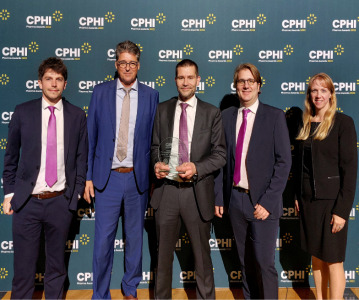
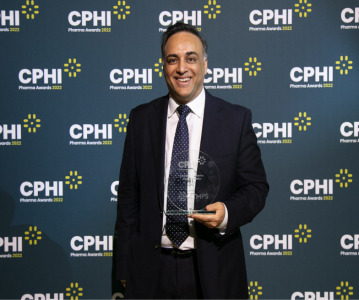
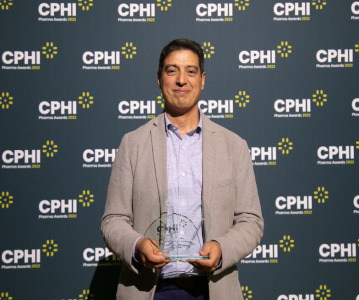
.png)
